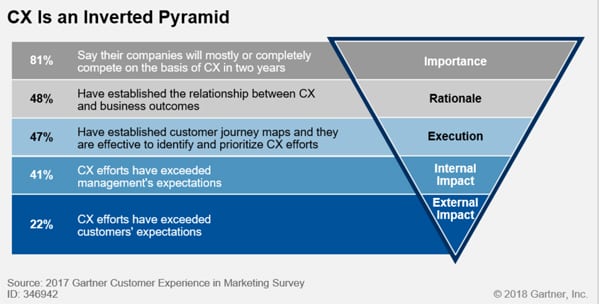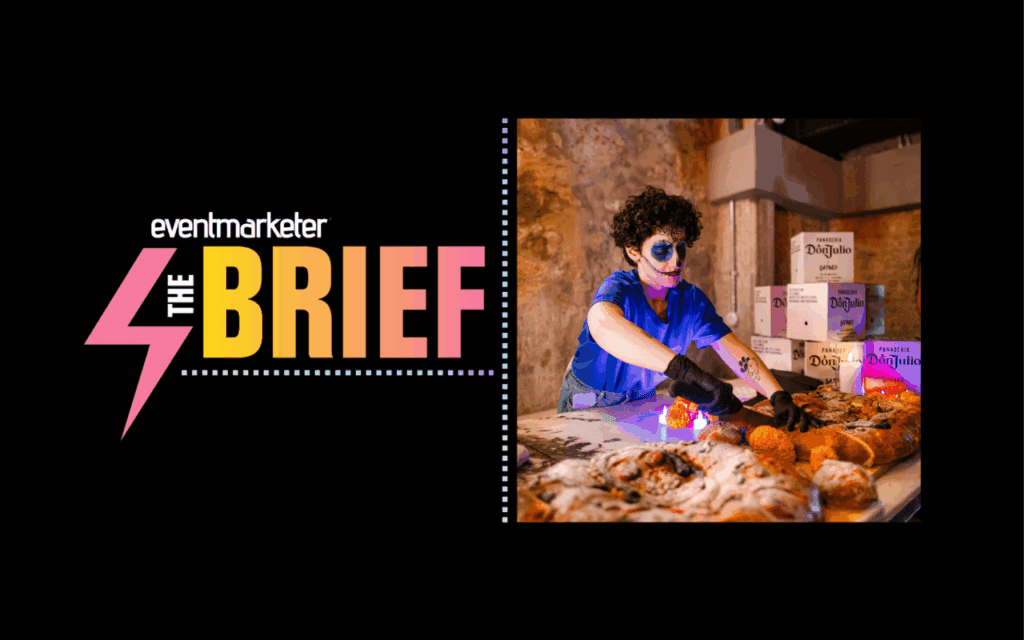Over 80 percent of brands say their success will soon be mostly or entirely dependent on customer experiences (CX), but less than half have a strategy in place to explain why CX drives their ROI, according to a new report from Gartner.
“The biggest challenge for a lot of brands is that they’re focused on quarterly results, rather than innovating for the future,” often because they need to meet the short-term expectations of stakeholders, says Augie Ray, research director at Gartner. “Brands need to recognize that there can be a balance.”
The way brands think about customer experience needs to change, he notes. Many mistake CX for brand experience, and they’re not the same. “There are experiences that are really designed to help the brand. CX by definition is things we do for the customer, and about lifting customer loyalty and advocacy. And when we help the customer, we help the brand.”
The goal of CX is, of course, to exceed customer expectations. But, while 48 percent of the CX leaders surveyed said their efforts were exceeding management’s expectations for CX, only 22 percent said the same of customer expectations.
“Leading brands in CX start with a strong foundation in customer satisfaction,” says Ray. “Getting this right and understanding how to build upon it to drive positive financial and business outcomes is what sets the best brands apart from the rest.”

In the report, Gartner suggests that companies view their CX framework as a five-stage pyramid:
Stage 1—Communication: Customers need the right information at the right time in the right channel. If you accomplish this, you’ll improve your inbound traffic. Get it wrong and you’ll lose leads and frustrate your prospective customers.
Stage 2—Responsive: This means solving customers’ problems quickly and efficiently. Brands that succeed here see the customers’ problems as the brands’ problem, and respond in ways that balance the business and customer goals.
Stage 3—Commitment: Listening for, understanding and resolving customers’ unique needs is a critical step. Brands that do this convey a greater level of customer care and satisfaction. L.L. Bean, with its liberal return policy, is a classic example of this. Even when the policy was tightened earlier this year, it is still more generous than most competitors. A commitment to compassionate customer service can create differentiated experiences and resolve issues before they happen.
Stage 4—Proactive: Here is where brands can get a step ahead of consumers, and give them what they need before they even ask. An example of a brand that made this happen is Nest, which disrupted the thermostat marketplace by offering a smart product that reprogrammed itself without customer action or intervention.
Stage 5—Evolution: At the top of the pyramid is a level that few brands achieve. These brands are making customers not only view the brand more favorably, but change the way the customers think about themselves. Apple, notes Gartner, is an aspirational example of this. The iPhone wasn’t the first smartphone, but it was the first that allowed people to carry their worlds with them in a way like never before. Because of this, Apple has powerful customer loyalty.
More on Customer Experience:
- Creating Great Customer Experiences: Four Areas to Master
- Customer Engagement Vital for CMO Job Security
Some of the activities at the bottom of the pyramid are more oriented to the brand, with advertising and content strategies designed to promote the brand, versus information that the customer can use.
“I often challenge clients to think about the brands they love,” says Ray. “Do you love them because they share content, or do you love them because they do something [for you]? The exception is when the brand is the content, like Disney.”
According to Gartner, brands that want to launch new and more innovative customer experiences should consider several steps:
Expand your vision: Many brands start their customer journey maps too late (say, when a customer enters a website), or end them too early (when a product is delivered). This means they miss many opportunities to engage the customer. Ride-share companies like Lyft and Uber rewrote customer expectations about transportation by engaging them at additional touchpoints not in the typical taxi journey.
Align to your existing organizational strategies: Sometimes, innovation seems like a solution in search of a problem. Flip the perspective and consider how technology can satisfy existing customer needs and company goals.
Test, test, and test again: Big risks are a lot less scary when broken down into small steps and tests. A test-and-learn culture can improve CX and minimize brand risk. Before launching Tide Pods, the company did research with 6,000 consumers before going to market. When it launched in 2012, it achieved a 73 percent share of the segment, doubling its share in the liquid detergent category.



